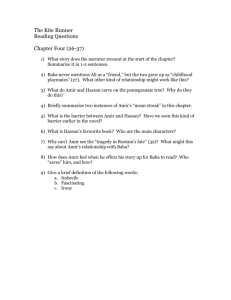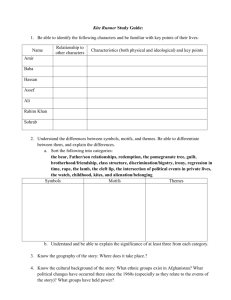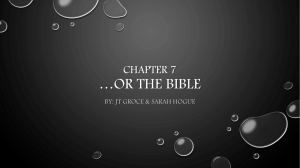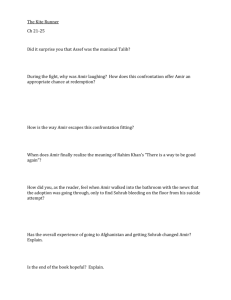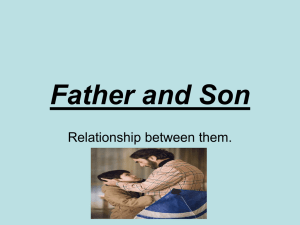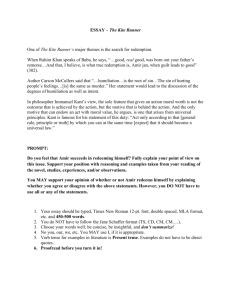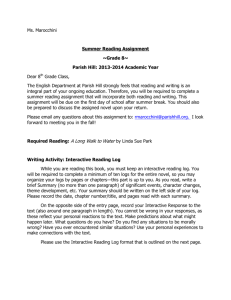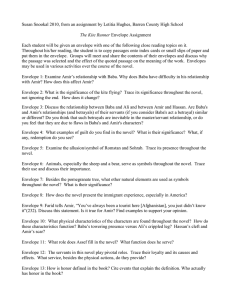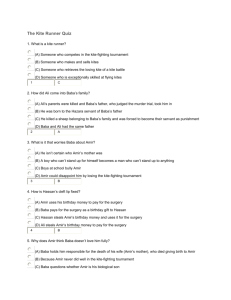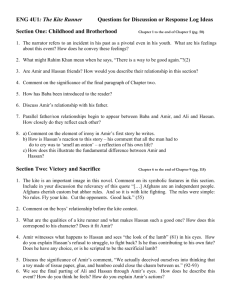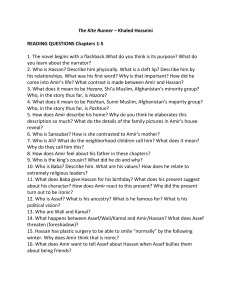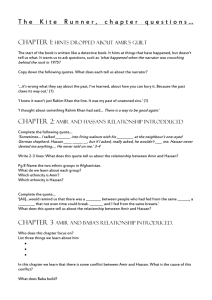The Kite Runner – Envelope Activity
advertisement
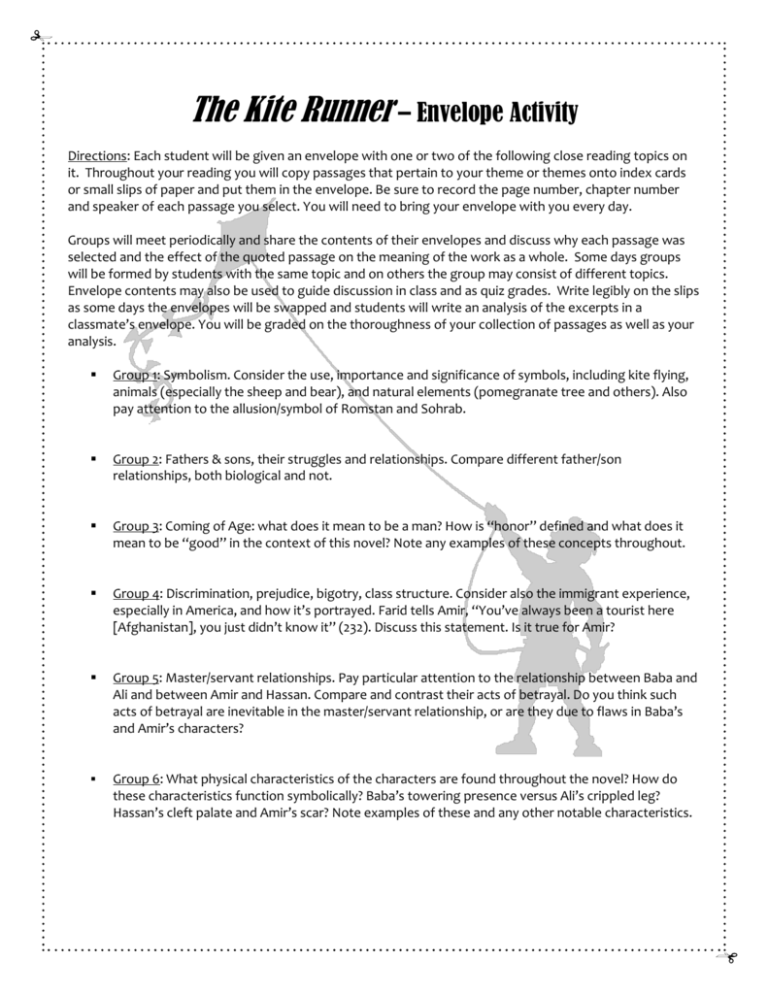
The Kite Runner – Envelope Activity Directions: Each student will be given an envelope with one or two of the following close reading topics on it. Throughout your reading you will copy passages that pertain to your theme or themes onto index cards or small slips of paper and put them in the envelope. Be sure to record the page number, chapter number and speaker of each passage you select. You will need to bring your envelope with you every day. Groups will meet periodically and share the contents of their envelopes and discuss why each passage was selected and the effect of the quoted passage on the meaning of the work as a whole. Some days groups will be formed by students with the same topic and on others the group may consist of different topics. Envelope contents may also be used to guide discussion in class and as quiz grades. Write legibly on the slips as some days the envelopes will be swapped and students will write an analysis of the excerpts in a classmate’s envelope. You will be graded on the thoroughness of your collection of passages as well as your analysis. Group 1: Symbolism. Consider the use, importance and significance of symbols, including kite flying, animals (especially the sheep and bear), and natural elements (pomegranate tree and others). Also pay attention to the allusion/symbol of Romstan and Sohrab. Group 2: Fathers & sons, their struggles and relationships. Compare different father/son relationships, both biological and not. Group 3: Coming of Age: what does it mean to be a man? How is “honor” defined and what does it mean to be “good” in the context of this novel? Note any examples of these concepts throughout. Group 4: Discrimination, prejudice, bigotry, class structure. Consider also the immigrant experience, especially in America, and how it’s portrayed. Farid tells Amir, “You’ve always been a tourist here [Afghanistan], you just didn’t know it” (232). Discuss this statement. Is it true for Amir? Group 5: Master/servant relationships. Pay particular attention to the relationship between Baba and Ali and between Amir and Hassan. Compare and contrast their acts of betrayal. Do you think such acts of betrayal are inevitable in the master/servant relationship, or are they due to flaws in Baba’s and Amir’s characters? Group 6: What physical characteristics of the characters are found throughout the novel? How do these characteristics function symbolically? Baba’s towering presence versus Ali’s crippled leg? Hassan’s cleft palate and Amir’s scar? Note examples of these and any other notable characteristics. Themes Loyalty & devotion vs. duty Man's inhumanity to man Resilience of the human spirit Power Struggles/Bullying Friendship, guilt & redemption. Group 1: Symbolism. Consider the use, importance and significance of symbols, including kite flying, animals (especially the sheep and bear), and natural elements (pomegranate tree and others). Also pay special attention to the allusion/symbol of Romstan and Sohrab. Group 2: Fathers & sons, their struggles and relationships. Compare different father/son relationships, both biological and not. Group 3: Coming of Age: what does it mean to be a man? How is “honor” defined and what does it mean to be “good” in the context of this novel? Note any examples of these concepts throughout. Group 4: Discrimination, prejudice, bigotry, class structure. Consider also the immigrant experience, especially in America, and how it’s portrayed. Farid tells Amir, “You’ve always been a tourist here [Afghanistan], you just didn’t know it” (232). Discuss this statement. Is it true for Amir? Group 5: Master/servant relationships. Pay particular attention to the relationship between Baba and Ali and between Amir and Hassan. Compare and contrast their acts of betrayal. Do you think such acts of betrayal are inevitable in the master/servant relationship, or are they due to flaws in Baba’s and Amir’s characters? Group 6: What physical characteristics of the characters are found throughout the novel? How do these characteristics function symbolically? Baba’s towering presence versus Ali’s crippled leg? Hassan’s cleft palate and Amir’s scar? Note examples of these and any other notable characteristics.
